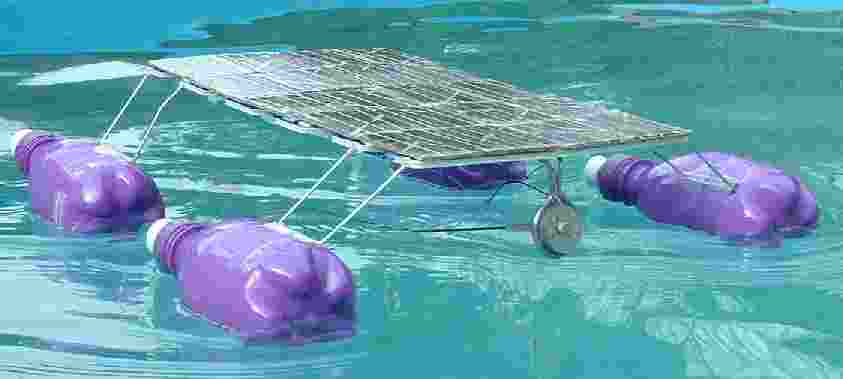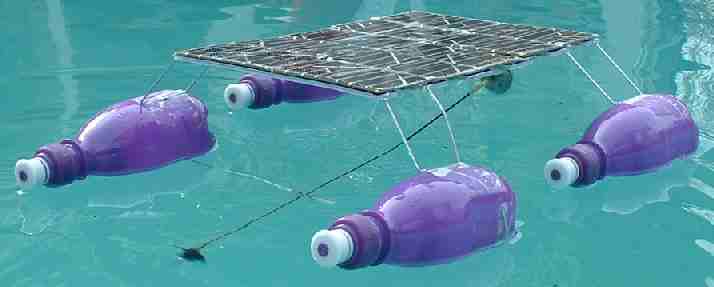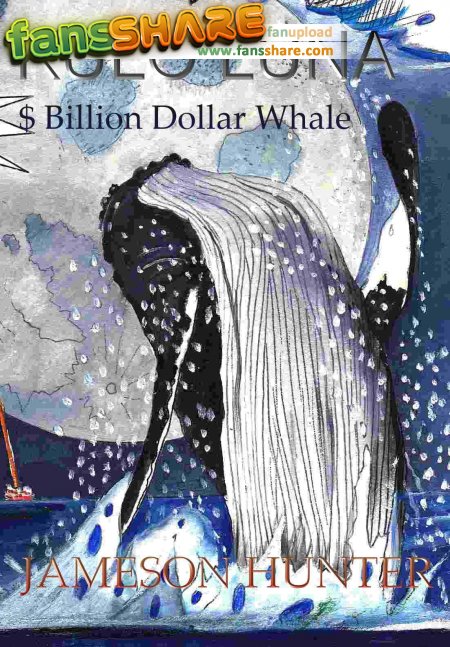|
SOLAR POWERED BOTTLE BOAT - water drive propeller
|
|
|
It proved very difficult to source a suitable air propeller which would allow the solar motors to spin up to an efficient speed. Small electric motors are not that efficient (about 20-40%) and even less so at low revolutions. Consequently, it was decided to fit a water propeller as the next stage of testing.
In addition to the poor thrust and the necessary height to give the air propeller space to spin, the 1st version of the blackcurrant bottle boat was unstable in high winds, just as with the action man conversion. On several occasions a gentle push saw the boat up-end and nose dive beneath the water.
Lower and more purposeful looking - Bottle Boat 2 takes to the water
With the water propeller, the performance improvement is staggering. The lowered bottle boat is much more stable in cross winds. We wonder what will improve the performance further? Notice that the blunt nosed soft drink bottles produce a wide bow wave pattern. That is not good. So hull refinement is the next issue: thinner bottles.
The cross sectional area of a hull is the most important factor in determining drag. The second most important factor, is the shape of the bows. A fine smooth angle to the bows will generally be able to cut through the water a lot easier than a blunt nose.
Airplanes have fine angles to their nose cones for this reason; to reduce the change is angle that the air must undergo to allow the fuselage to push through. In our case it is water that is being pushed aside. Water is far more dense than air, so, proportionally more energy (thrust) is needed to push a hull through the sea.
This photo clearly shows the prop shaft arrangement of BBSB2
Did I say through the sea? That is not quite correct. It's actually a bit of a mixture. A submarine that is submerged pushes through the water, equally on all sides (they have no sides, but you know what I mean). A surface vessel more parts the water using just the underside of its hull. It might be better to skim across the surface of the water. But that would use a lot of energy, and, that might produce a very uncomfortable passage - bouncing from one wave top to the next.
Give this some thought. It is very important. Some surface ships are designed to push through the water, with a submerged nose. This induces laminar flow, reducing the bow wave. Think of a large bow wave as being visually impressive, but a waste of energy, pushing all that water to one side.
If you don't believe me, fill a bucket a quarter full of water and throw it as far as you can. Easy wasn't it. Then fill the bucket completely and try throwing it. It will be much harder to throw the full bucket. A fine hull pushing through the water is like throwing the quarter full bucket. A blunt hull pushing through the water is like throwing a full bucket all the time.
MORE ON AGENDA 21 MEMBERS OF PARLIAMENT A-Z HOUSE OF LORDS A-Z COUNCIL'S AGENDA 21
A heartwarming adventure: Pirate whalers V Conservationists, with an environmental message. For release as an e-book in 2013 with hopes for a film in 2015 TBA (graphic design: Martin House)
|
|
|
This website is Copyright © 1999 & 2012 Max Energy Limited an educational charity working hard for world peace. The bird logos and names Solar Navigator, Blueplanet Ecostar and Utopia Tristar are trademarks. All rights reserved. All other trademarks are hereby acknowledged. |
|
|
AUTOMOTIVE | BLUEPLANET BE3 | ELECTRIC CARS | ELECTRIC CYCLES | SOLAR CARS | SOLARNAVIGATOR | UTOPIA |


